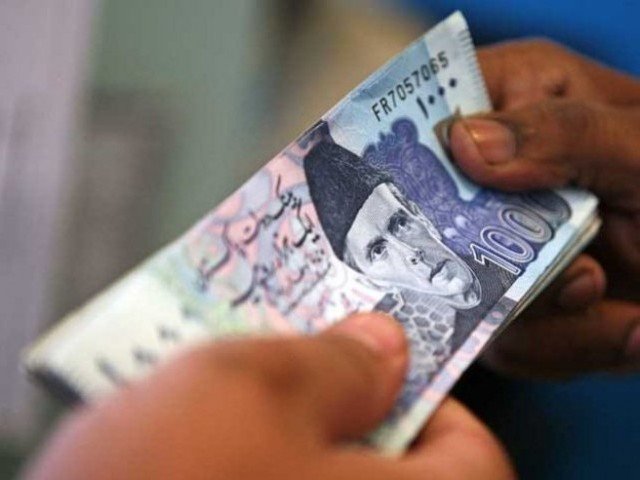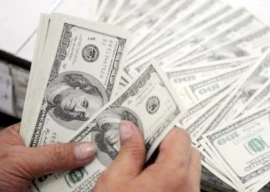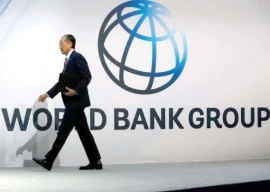
The central government’s debt rose 21.3% to Rs33.4 trillion by the end of February as compared to the same month of last year, according to statistics that the central bank released on Tuesday.
In February last year, PM Imran had vowed that he would bring public debt down to Rs20 trillion before he left the office. But policy directions of the past one year indicate that by the time Pakistan Tehreek-e-Insaf (PTI) government leaves the office in 2023, the debt level will almost double.
Successive governments had added Rs24.2 trillion to the public debt in 71 years, which the Ministry of Finance’s projections show may jump to at least Rs47 trillion within five years of the PTI government.
When Imran Khan became the prime minister, the central government’s debt was close to Rs24.2 trillion and about Rs9.2 trillion has been added so far, excluding liabilities. The central government debt, which was Rs27.5 trillion in February last year, jumped to Rs33.4 trillion as of February this year, according to the SBP bulletin.
In absolute terms, there was an increase of Rs5.9 trillion or 21.3% in the central government debt as of the end of February.
The situation is likely to worsen due to the government’s increasing liabilities in the aftermath of Covid-19 and an expected steep reduction in both tax and non-tax revenues. PM Imran has brought four chairpersons of the Federal Board of Revenue (FBR) in the past 20 months but the revenue shortfall has widened.
Last week, the prime minister struck yet another political compromise and allowed wealthy builders and developers to invest their black money in the realty sector instead of taking them to task. Earlier, he struck a compromise with traders that contributed to further erosion of the tax base.
The government also lacked the political will to enforce the condition of declaring Computerised National Identity Card (CNIC) number on purchase of goods worth Rs50,000.
Pakistani rupee has again started shedding its value against the US dollar and closed at Rs167.9 on Tuesday, which will have implications for the debt level for March and April. The central government’s debt increased 5.2% to Rs33.4 trillion in eight months to the end of February in the current fiscal year, an addition of Rs1.64 trillion, according to the SBP.
The general government debt, including guarantees and borrowing from the International Monetary Fund (IMF), rose to 88% of gross domestic product (GDP) by the end of previous fiscal year, according to the IMF.
In the current fiscal year too, the IMF has revised upwards its projection for public debt and liabilities to 84.7% of GDP or Rs37.6 trillion, showed a report.
But these projections are likely to be revised further due to implications of the coronavirus for the economy and government’s revenues.
The central government debt comprises long and short-term domestic debt and external debt.
The SBP report showed that the central government’s total domestic debt increased from Rs20.7 trillion in June last year to Rs22.7 trillion in February, a net addition of Rs1.4 trillion or 6.5%. A major increase in the federal government’s debt was on account of long-term debt, which swelled from Rs15.2 trillion to Rs16.9 trillion. There was an increase of Rs1.7 trillion or 10.8% in the long-term debt.
This was because of the government’s decision to convert its short-term borrowing from the central bank to long-term debt.
The short-term domestic debt dropped from Rs5.5 trillion in June 2019 to Rs5.3 trillion in February this year. There was a reduction of Rs200 billion in the short-term debt.
The federal government’s debt, acquired through the sale of Market Treasury Bills (MTBs) to commercial banks, has again started rising after remaining on a downward trajectory. The MTBs-based debt increased from Rs4.9 trillion to slightly over Rs5 trillion. The external debt of the central government increased from Rs11 trillion in June to Rs11.23 trillion in February.
The external debt of the central government did not increase at a rapid pace due to the booking of IMF liabilities and hot foreign money on books of the central bank. This external debt is expected to surge again due to currency devaluation.
The hot foreign money has also started gradually flowing out as foreign investors have so far pulled out $2.2 billion, mainly the UK investors, out of total inflows of $3.4 billion.
Published in The Express Tribune, April 8th, 2020.
Like Business on Facebook, follow @TribuneBiz on Twitter to stay informed and join in the conversation.


1727778647-0/diddy-(16)1727778647-0-165x106.webp)

1732014631-0/BeFunky-collage-(71)1732014631-0-165x106.webp)












COMMENTS
Comments are moderated and generally will be posted if they are on-topic and not abusive.
For more information, please see our Comments FAQ